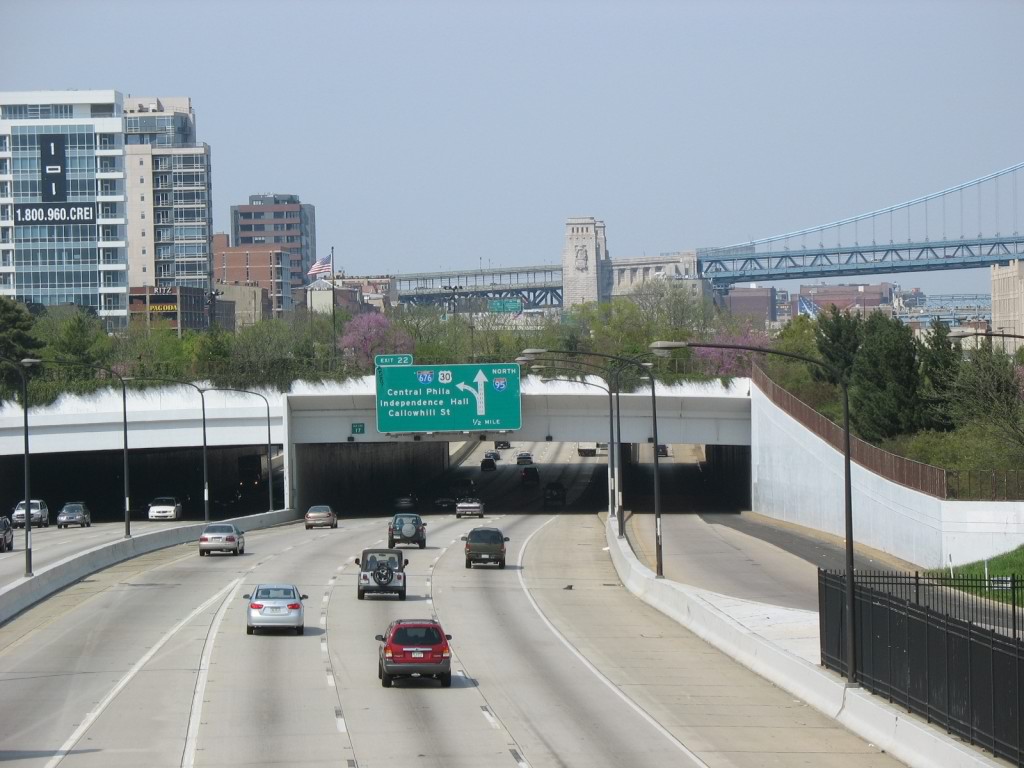Plans are being developed in Philadelphia for Penn’s Landing Park: a building project in which an 11-acre park will be constructed above I-95.
Since its construction in the 1960s, I-95 has been cutting off the center of the city from the riverfront, but it seems that this is about to change. The park will be located between Walnut Street and Chestnut Street and act as a bridge between Center City and the river. Regarding the project, Tom Corcoran, president of the Delaware River Waterfront Corporation, states, “There is now a once-in-a-generation opportunity to reconnect Penn’s Landing back to the Old City and the historic district.” In addition to bridging currently-disconnected parts of the city, the project will also create opportunities for future development, including new residences, hotels and retail area.
Landscape architecture firm Hargreaves Associates is designing the park. According to Hargreaves’ feasibility study, the park is expected to bring roughly $1.6 billion in economic returns to the area over the next 25 years.
The cost of the project is estimated at $225 million, and most of those funds are already secured. The city will pay $90 million, and the William Penn Foundation has pledged $15 million. It was also recently announced that Pennsylvania Department of Transportation (PennDOT) would contribute $100 million to the project.
The idea of building a park over a freeway or highway is not necessarily a new one. This kind of structure, which is often referred to as a “freeway cap park” or “highway cap park,” was implemented as early as the 1950s in Brooklyn and 1976 in Seattle. More recently, in 2008, Boston enacted the “Big Dig” project, which moved several freeways underground and allowed for the development of five new parks. A similar structure was constructed in Dallas in 2012.
In Philadelphia, talk of constructing a cap park has been going on for decades, beginning with the construction of I-95 in the 1960s. Discussion continued up until 2002, when Philadelphia Inquirer architecture critic Inga Saffron wrote an impactful critique of I-95’s placement. In 2007, PennPraxis, a nonprofit group from UPenn School of Design, presented a plan urging the city to reconnect Center City to the riverfront. In 2011, the Delaware River Waterfront Association included a plan for a cap park into its Master Plan, and in 2012, the city adopted this plan. The past few years have entailed extensive planning and fundraising. Although early work is slated to begin in the next few years, there is still no official timeline for the building project.
Sources: archpaper.com, billypenn.com, gizmodo.com, NBC

